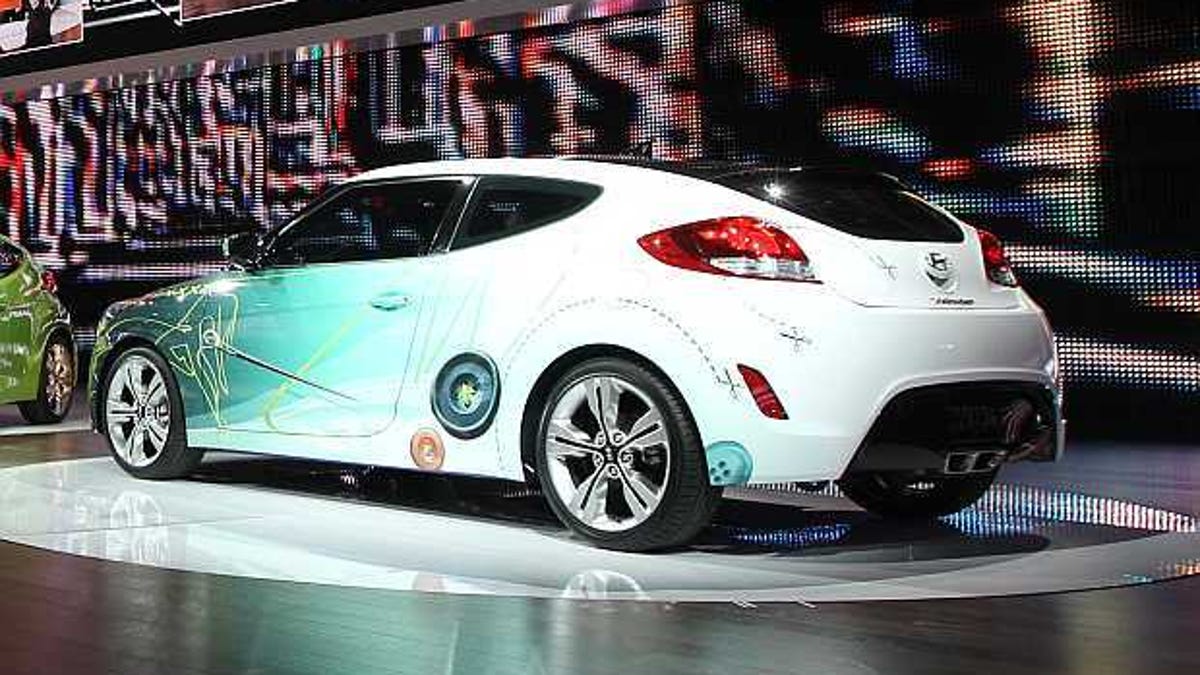Hyundai's Veloster has doors in all the right places
Hyundai's Veloster features an asymmetrical door configuration and a low-slung design.

DETROIT--After a few rounds of preshow teasing, Hyundai has announced and unveiled the production version of the 2012 Veloster.
The first thing you'll notice about the Veloster (or second, depending on which side of the car you're standing) is the third door on the coupe's passenger side. Hyundai claims that by using two shorter doors on this side of the vehicle, it is able to both ease entrance into the Veloster's rear seat and ease parking by shortening what would be one longer door. It makes sense, but is a little odd. Fortunately, we like odd.
Under the Veloster's hood is a 1.6-liter direct-injected four-cylinder engine that makes 138 horsepower and 123 pound-feet of torque. Power is sent to the front wheels through either a six-speed manual gearbox or Hyundai's new six-speed dual-clutch automatic transmission. Fuel economy is estimated at up to 40 highway mpg.
Hyundai's clearly proud of its little whatever-the-Veloster-is. The automaker took potshots at competing models, citing a lower curb weight than Mini's Cooper and better fuel efficiency than the Honda CR-Z (although to be fair, the CR-Z is a bit of an easy target). In the same breath, Hyundai admitted that the Veloster isn't an all out speed machine, stating that the hatchback is the sort of car you can "drive at 9/10th and not lose your license." If we can get at least a the
Settled behind the wheel, one notices that the Veloster is also equipped with the newest generation of Hyundai's infotainment and telematics technology. The vehicle features the standard array of Bluetooth (hands-free and audio streaming), USB, and iPod connectivity, but also features Pandora Internet Radio controls when paired to an iPhone, Android, or Blackberry device running the app. There's also Gracenote automatic playlisting, which can be used to verbally access media on a connected device and create similar music playlists with a spoken command. The unit also features a small amount of space for audio ripping (we're guessing it's only a gigabyte or two of flash memory, since Hyundai claims only 10 CDs will fit). Two audio systems are available, a standard 196-watt six-speaker rig and an eight-speaker (including a subwoofer and amplifier) Dimension Premium Audio system with 450-watts of power. Navigation is optional.
Also available is Hyundai's new Blue Link system, which connects the navigation, safety, and other systems to the outside world with a combination of voice recognition and operator assistance. You can learn more about Blue Link here.
Hyundai plans to sell the Veloster starting at about $17,000. We're looking forward to taking our turn behind the wheel when it hits showroom floors later this year.

